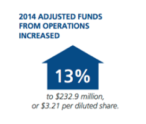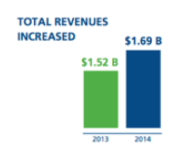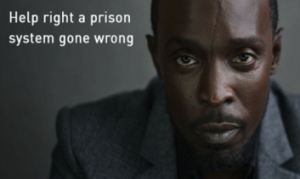To Whom It May Concern:
Good morning! My name is Cheyenne Knight and I am a student at the University for Pittsburgh. I am currently taking a course called Writing for the Public, and we are focusing our work on the theme of mass incarceration and imprisonment. I am working with three other students to raise awareness of children and families of prisoners, the struggles that they face, and the resources that they can utilize. We are very interested in working with local organizations to help raise awareness and assist in promoting the programs and resources that they offer, whether it be through writing brochures, articles, or papers on the subject, making videos about the subject, or even holding public forums/discussions to get the community involved in helping the families of prisoners. I wanted to reach out to you today and ask if you would be interested in working with us or have any advice for us as we embark on raising awareness for this. We are willing to do whatever is needed of us in the scope of public writing/discourse.
Thank you so much, and I hope to hear from you soon!
Take care,
Cheyenne Knight
————
Dear Emily and Kayla,
Thank you so much again for meeting with Kristen and I a few weeks ago! After meeting with Peter, our professor, and discussing how exactly we are allowed to approach our project, working with you all will not be an issue. We will be able to meet with you all and the ambassadors for the meeting on Saturday, November 21st, but after that initial meeting we will not have much time to meet again before Thanksgiving break, finals week, and then winter break. We are still interested in working with you all and contributing as much as possible within these next few weeks. Since we are not meeting until next weekend, is there anything that we can prepare prior to attending? Whether that be research, formulating ideas, potentially creating a script–anything we can do to help! Please let me know.
Also, what time does the meeting start on Saturday?
We hope to hear from you all soon, and thank you again for your time!
Take Care,
Cheyenne
————
Dear Kayla,
Our group met today and will meet again on Thursday to finish up the schedule/timeline for the video production. We got to talking and wanted to find a way to do more for Amachi Pittsburgh. We potentially talked about doing Ambassador spotlights since we would be getting to know the ambassadors on Saturday and what all they do to help the youth. I found the “Meet the Ambassadors” section on your website after our group met and noticed that it was empty, so that is something that we would definitely be interested in helping with if you needed us to do so.
Also, we talked about producing a brochure/flyer to help promote Amachi that either you could distribute or that the four of us could distribute/hang up around campus. We discussed potentially finding an organization on campus that aligned with your organization and what it stands for and distributing these brochures/flyers to them as well.
Another idea we had was to help focus on social media, but I am aware that you have a strong presence on Twitter, Facebook, and the Amachi Pittsburgh app. Your Instagram, however, is not as active, and there does not seem to be a public Ambassador Facebook page where the Ambassadors could share what they are doing in regards to Amachi and what the public can do to help. We thought that maybe we could help set up an account or revamp an existing one, where we could feature some things initially, and then create a guide for the Ambassadors to help them optimize it. A few of us in the group are in charge of social media and PR for organizations we are in on campus, so we have the experience and the resources to make guides.
Sorry that this email is so lengthy, but we are just looking for others ways to help you all! Thank you again for letting us team up with you!
Take Care,
Cheyenne






